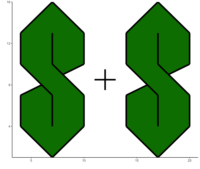It’s May 4th — otherwise known as Star Wars Day! It’s time for a long-overdue Star Wars themed post. You may not be aware, but yours truly is a massive Star Wars nerd.
You may think that Star Wars doesn’t lend itself well to data analysis, but that’s where you’re wrong. If you’re like me, you spent countless hours through Middle and High School reading the Star Wars Wiki (aka Wookiepedia).
For this blog post, I scraped information for every planet that has a Wookiepedia article. Overall, there were 1,165 planets with a Wookiepedia article — ranging from Moorja (whose article is a single sentence long) to Mustafar. I’ve put together some fun analyses based on the information I gathered. Click to skip ahead:
Relative Lore Importance
Article Length
You may have wondered which planets in the Star Wars universe are “most important” to the lore. For example, certain planets—like Tatooine— seem to make an appearance in every piece of Star Wars media. Others are only mentioned as a throwaway line in a single book or comic.
One metric we can think of to measure “Relative Lore Importance” of a planet is Wookiepedia article length. Ostensibly, articles with the most content are most important to the lore.
Note: this is not always the case with wikis, which rely entirely on volunteer contributors. For example, the fourth longest English Wikipedia article is for Season 6 of the Philippine singing competition Tawag ng Tanghalan.
Nonetheless, I think article length could still be a useful yardstick of Lore Importance. Let’s look at the Top 15 planets with the longest (canon) Wookiepedia articles. Each planet is pegged against the planet with the longest article to create a metric that ranges from 0 to 1.
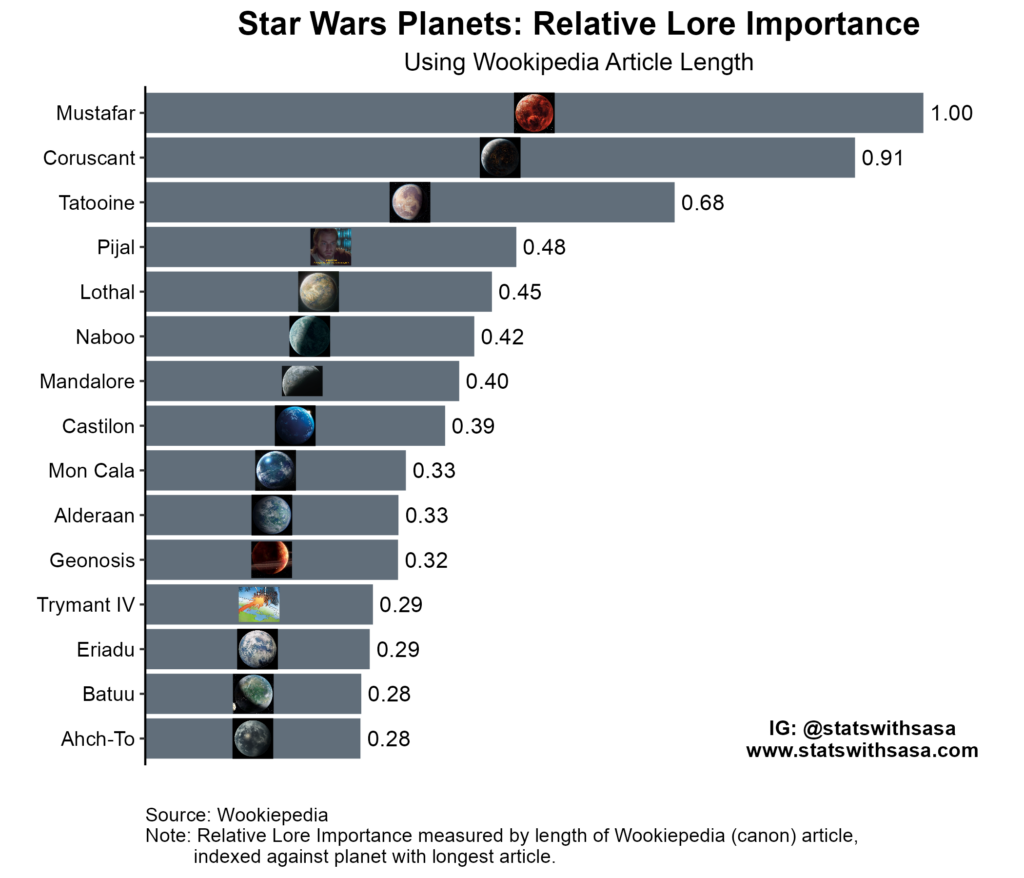
Some of these make a lot of sense: for example, the Top 3 longest Wookiepedia articles are for Mustafar, Coruscant, and Tatooine with a huge drop-off after. These names should be familiar to even the most casual Star Wars fans. They’ve made multiple appearances in the movies and shows through the decades.
However, some of these are headscratchers. I had never heard of the planet Pijal before writing this article. It appears that the planet has made only one meaningful appearance in a book about Qui-Gon Jinn and Obi-Wan Kenobi. I’m not sure why the article is so long. If you look closely at my chart, you’ll notice I couldn’t even find a picture of the planet. Instead, I refer to a picture of Obi-Wan searching for the missing planet of Kamino in the Jedi Archives. You may also notice some key planets, like the Wookie homeworld of Kashyyyk, missing from this chart
Okay, so let’s see if there’s a better way to do this.
Number of References
Another way to measure the Lore Importance of a planet is to count the number of notes and references in the planet’s Wookiepedia article. Ostensibly, this will proxy very well for total appearances across all of Star Wars Media.
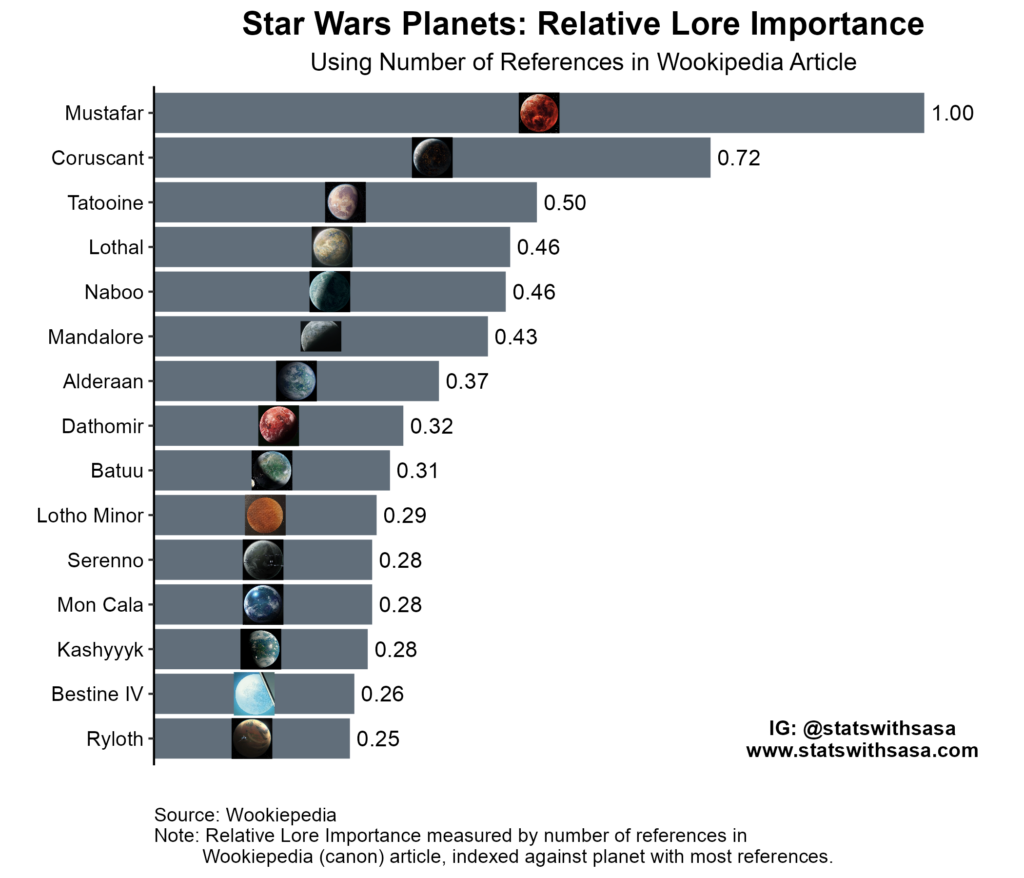
This chart makes more sense in my opinion. We no longer see the random planet of Pijal. Instead, key planets like Dathomir (home of the Night Sisters), Kashyyyk (home of the Wookies), and Ryloth (home of the Twi’leks) enter into the equation.
Planet Affiliation
Republic vs. Separatists
Let’s look at how many planets defected to the Confederacy of Independent Systems (the Separatists), versus how many stayed loyal to the Galactic Republic. Note that this analysis only shows planets with Wookiepedia pages that had an “affiliation” listed for one of the two sides. The actual lore count of planets on each side is drastically larger. But we can think of this graphic as a measure of which “important planets” (aka the ones actually mentioned by name) affiliated themselves with each side.
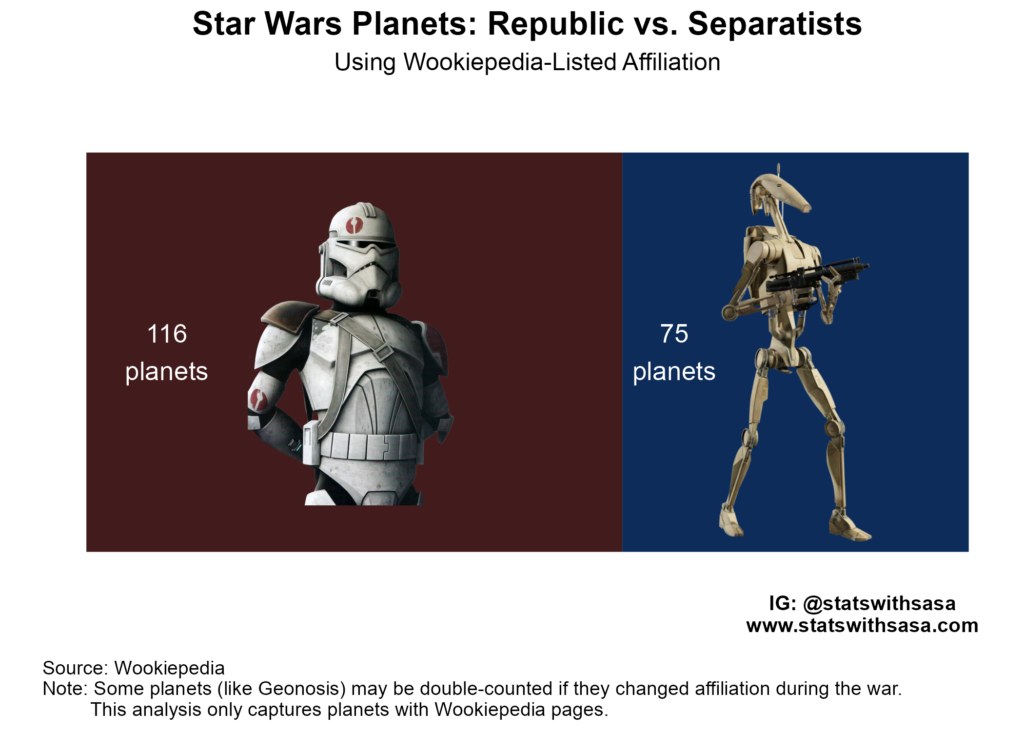
This may not be surprising to most of us. Shows like The Clone Wars always implied that far more planets stayed loyal to the Republic than defected.
Galactic Empire vs. Rebel Alliance
Now let’s look at the second major conflict in the series: the Galactic Empire versus the Rebel Alliance. Don’t forget to recall the caveats listed above.
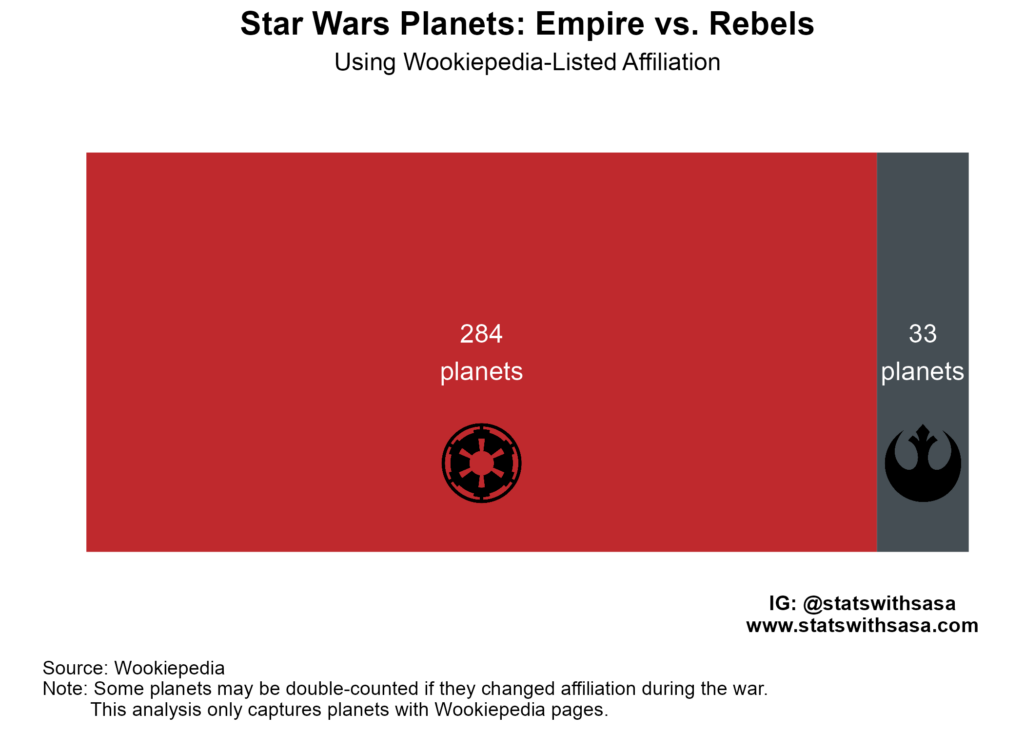
This graphic is a lot more stark. A whopping 284 planets are listed as affiliated with the Galactic Empire at some point, compared to a measly 33 that counted themselves among the Alliance to Restore the Republic. In other words, Palpatine blew a 284-33 lead.
Most Widespread Aliens
The Star Wars Universe obviously centers around Humans. However, let’s take a look at which Alien species are the most widespread across the Galaxy. Specifically, we look at each species and count how many planets have a substantive population of that species per Wookiepedia. Let’s look at the Top 10 by this metric:
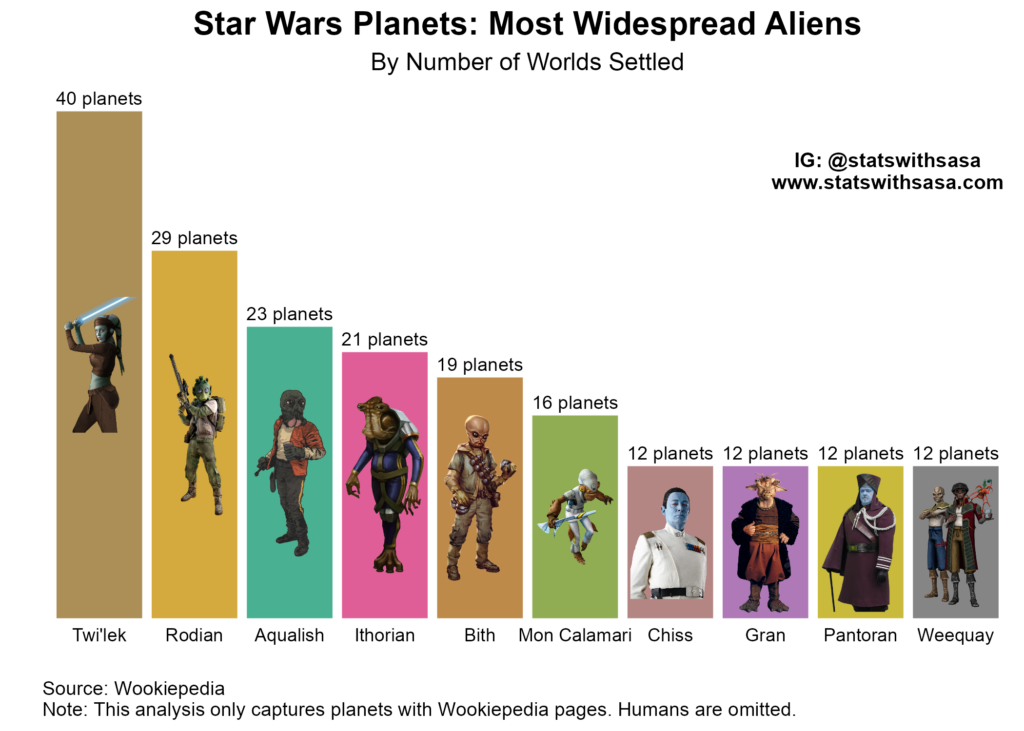
We do see some surprises here. I certainly did not expect the Aqualish to be the third most ubiquitous species in the Galaxy. Twi’leks, on the other hand, are not so surprising…
Population
I want to caveat that this section is easily the most hand-wavy of the sections in my post. Wookiepedia technically lists populations of a lot of planets, but it’s often a vague “millions” or “billions”.
For fun, I looked at the planets with listed populations. First, we can look at the Galactic Population Distribution for planets that have a listed population.
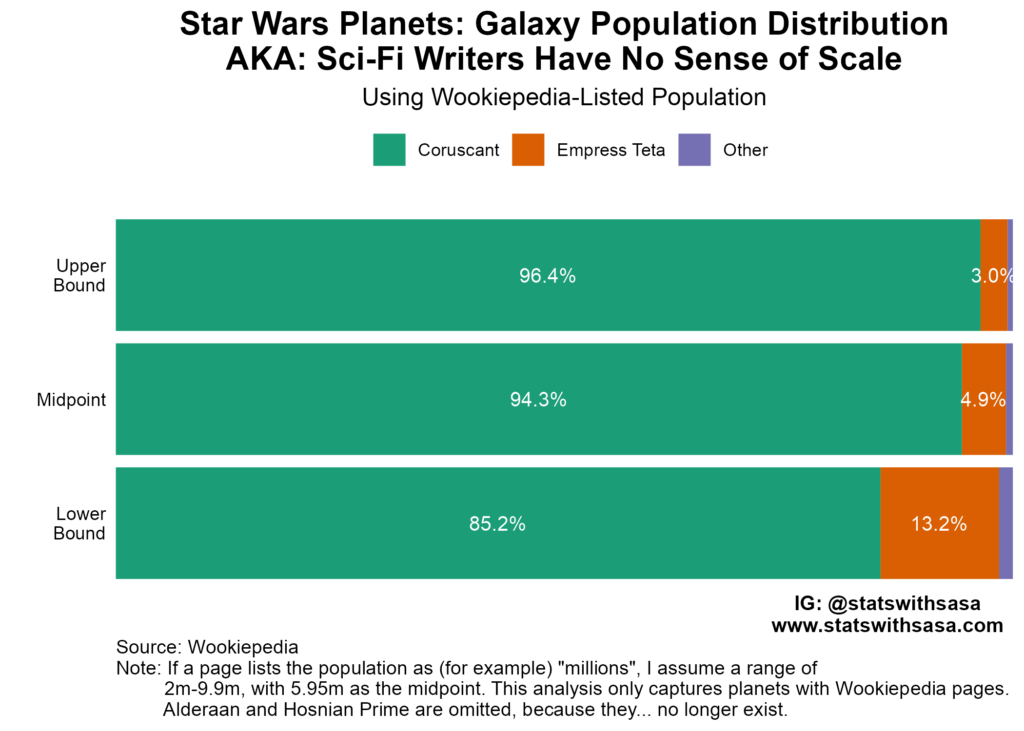
I chose to include this (mostly BS) graph because it illustrates a common Sci-Fi trope really well: Sci-Fi Writers Have No Sense of Scale. Wookiepedia lists Coruscant as having a population of “trillions”, and another planet Empress Teta as having 310 billion. The rest of the most populous planets have at best billions (not tens of billions) inhabitants. The problem is that there is a massive gulf between 1 Trillion and 1 Billion. In fact, consider the mathematical fact that a person worth $100 Billion is technically closer to a homeless person than someone who is worth $1 Trillion. The above graphic illustrates this really well.
Okay, so let’s ignore Coruscant and Empress Teta and rank the other most populous planets. For planets with extremely vague populations of “billions”, I assume that this ranges between 2b and 9.9b (with the logic that if it were higher, it would be “tens of billions). I use the midpoint of this range in the following chart for fun.

Obviously take this with a massive grain of salt. Does anything here surprise you?
Conclusion
I hope you enjoyed this post! Thanks for reading so far. Did anything in this article take you off guard? Feel free to comment below if so! Also, don’t forget to subscribe below if you liked reading.
Honestly, I cobbled this article together kind of last minute (I started after work on the 3rd). I have a more long-term project that will require scraping a lot more articles where I plan to analyze all Star Wars force sensitive individuals. I want to look at things like: which Jedi Masters have had the most apprentices fall to the Dark Side? Which Alien species has produced the most Jedi (and Sith)? Stay tuned for this next year!
I’ll end this article with an amazing tribute video to one of Star Wars’ most tragic figures: Darth Maul.
